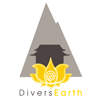[ezcol_1half]Transhumance in Tunisia takes many shapes and forms – but it is still very much alive and central to rural and desert culture in the country. Unlike neighbouring Morocco, relatively little is known about the state of the practice today in Tunisia, and much less about its links with biodiversity… In central and southern Tunisia the ways of the camel transhumance conserve biodiversity because: they move over large surfaces in search of food; they only take part of each plant; and their hooves are soft and have less disturbance than other animals. The nomadic life of the desert herders is hard – but beautiful and fascinating at the same time.[/ezcol_1half]
[ezcol_1half_end]The work of Wassim Ghozlani portrays the Tunisian transhumance with clarity and precision. Wassim Ghozlani is a professional photographer who lives and works in Tunis. His themes often incorporate reflections in relation to the world around us and the people who live in it. Wassim Ghozlani’s photographs have been exhibited in the Arab World Institute (Paris, France), at the White Box Gallery (New York, USA), at Puerta al Mediterráneo Festival (Aragon, Spain), the Meetings Bamako (Bamako, Mali), the Atrium Gallery (London, England), the Matilha Cultural (São Paulo, Brazil), the National Liberation Museum (Maribor, Slovenia) and the Palace of the Baron D’Erlanger (Sidi-Bou Said, Tunisia).
Website and portfolio links: www.wassimghozlani.com[/ezcol_1half_end]



